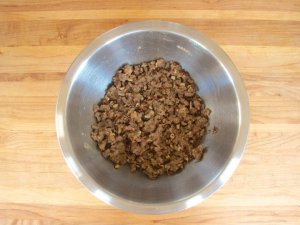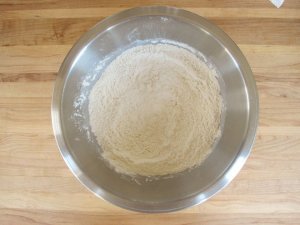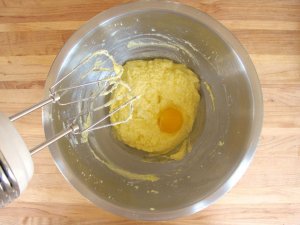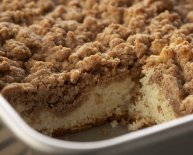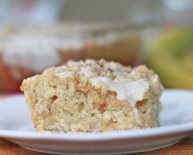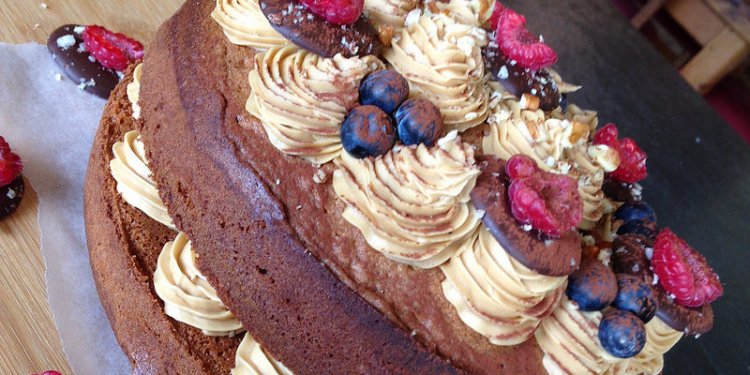
Traditional Coffee cake
 “I have checked out Baumbach’s. We have heard Milwaukee consuming its afternoon Kaffee. O Baumbach’s, along with your deliciously crumbling butter snacks plus kaffee kuchen, along with your thick cream, plus thicker waitresses and your cockroaches, and your dinginess along with your dowdy German females as well as your black, black Kaffee, where in this country can there be another like you!”
“I have checked out Baumbach’s. We have heard Milwaukee consuming its afternoon Kaffee. O Baumbach’s, along with your deliciously crumbling butter snacks plus kaffee kuchen, along with your thick cream, plus thicker waitresses and your cockroaches, and your dinginess along with your dowdy German females as well as your black, black Kaffee, where in this country can there be another like you!”
— Dawn O’Hara, the Girl whom Laughed (1911), Chapter VIII, entitled “Kaffee and Kafeekuchen, ” by Edna Ferber, noted author of among various other works Giant and Show Boat
Coffeecakes tend to be baked goods, generally speaking sturdy and casual, that commonly accompany hot drinks. They, obviously, may be enjoyed with no good thing about tea or coffee. Yet consuming an item of simple cake with a hot drink provides textual and flavor contrasts that enhance each product, making for a more significant and pleasurable knowledge. Hence desserts and pastries had been a simple an element of the selection of coffeehouses from their particular beginning.
The text coffee and tea were first mentioned in English in 1598 in an interpretation associated with the journeys of Dutch navigator Jan Huyghen Van Linschoten. Real coffee was only introduced to European countries (outside of this Ottoman Empire) by way of Venice in 1615 and achieved England in 1630 (23 years following the founding of Jamestown), several years prior to the arrival there of beverage in 1652. The first coffeehouse away from Ottoman Empire opened in Livorno, Italy in 1632; 1st in The united kingdomt was at Oxford in 1650. Subsequently, coffee cultivation spread outside its indigenous Ethiopia, even though the price of sugar in Europe plummeted as a result of increase of Caribbean cane. Thus because of the end of eighteenth century, the public of Europe partook of coffee on a daily basis and it also replaced alcohol here as the utmost widely consumed beverage.
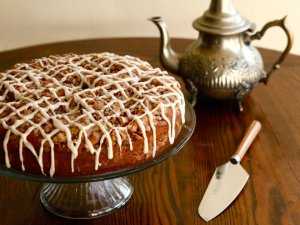 Meanwhile, the Dutch brought beverage to North America in 1650 and coffee in 1670. In the beginning, tea proved very popular. The first coffeehouse in the usa, the London Coffee House, established in 1676 in Boston. American coffeehouses served as one of the major areas for innovative activities, including purportedly planning the Boston Tea Party. After the War of 1812, inexpensive and high-quality coffee began flowing in from south usa. Starting in the 1840s, tumultuous financial and social circumstances in Germany resulted in years of mass immigration to The united states, the newcomers (alongside Scandinavians) bringing their particular foods, traditions, passion for coffee, and some common Teutonic expressions, including kaffeekuchen (yeast coffeecakes), blitzkuchen (“lightening, ” faster cakes made without fungus), krummelkuchen (crumb cake), kaffeehaus (coffeehouse), kaffeeklatsch (coffee chat), and streusel (from streuen, “to scatter/strew”). Demographic changes usually simply take a number of years or years to engender local cooking and social changes. Because of the mid-19th century, coffee replaced beverage and tough cider as the American drink of choice and German-style kuchen progressively supplanted British baked items as US coffeecakes.
Meanwhile, the Dutch brought beverage to North America in 1650 and coffee in 1670. In the beginning, tea proved very popular. The first coffeehouse in the usa, the London Coffee House, established in 1676 in Boston. American coffeehouses served as one of the major areas for innovative activities, including purportedly planning the Boston Tea Party. After the War of 1812, inexpensive and high-quality coffee began flowing in from south usa. Starting in the 1840s, tumultuous financial and social circumstances in Germany resulted in years of mass immigration to The united states, the newcomers (alongside Scandinavians) bringing their particular foods, traditions, passion for coffee, and some common Teutonic expressions, including kaffeekuchen (yeast coffeecakes), blitzkuchen (“lightening, ” faster cakes made without fungus), krummelkuchen (crumb cake), kaffeehaus (coffeehouse), kaffeeklatsch (coffee chat), and streusel (from streuen, “to scatter/strew”). Demographic changes usually simply take a number of years or years to engender local cooking and social changes. Because of the mid-19th century, coffee replaced beverage and tough cider as the American drink of choice and German-style kuchen progressively supplanted British baked items as US coffeecakes.
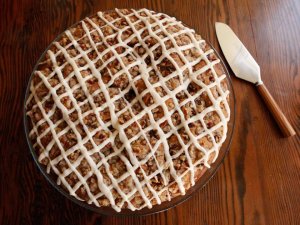 The Uk started referring to different baked items served with well-known hot drinks because of the brands “tea desserts” and “coffee cakes” comparable to the first “chocolate cakes, ” which followed, but didn't include, chocolate. English tea and coffee cakes had been usually unleavened snacks, scones, and crumpets (akin from what Us americans call English muffins), or sweet yeast buns. Inside vein, the “Tea Cakes” in The Cook and Housekeeper’s Complete and Universal Dictionary by Mary Eaton (The united kingdomt, 1822) had been unleavened sugar snacks, while the woman “Coffee Cakes” contained small sweet yeast cookies. The latter usage in the course of time vanished in The united kingdomt.
The Uk started referring to different baked items served with well-known hot drinks because of the brands “tea desserts” and “coffee cakes” comparable to the first “chocolate cakes, ” which followed, but didn't include, chocolate. English tea and coffee cakes had been usually unleavened snacks, scones, and crumpets (akin from what Us americans call English muffins), or sweet yeast buns. Inside vein, the “Tea Cakes” in The Cook and Housekeeper’s Complete and Universal Dictionary by Mary Eaton (The united kingdomt, 1822) had been unleavened sugar snacks, while the woman “Coffee Cakes” contained small sweet yeast cookies. The latter usage in the course of time vanished in The united kingdomt.
Having said that, the definition of “coffee dessert, ” denoting the drink accompaniment, gradually spread to America, such as for example within the Family doctor by Samuel B. Emmons (Boston, 1844). It was perhaps not, however, until following the Civil War as soon as the impact of German coffee practices expanded more pronounced the term referring to the drink accompaniment became commonplace in America. Much more usually, Americans initially used it to indicate a chemically-leavened butter cake integrating brewed coffee to the batter, for instance the “Coffee Cake” within the July 1860 problem of The Genesee Farmer (Rochester, NY) and also the “Connecticut Coffee Cake” in Jennie June’s American Cookery Book by Jane Cunningham Croly (nyc, 1870). As later once the 1918 version of The Boston Cooking School Cook Book, Fannie Farmer employed “Coffee Cake” and “Rich Coffee Cake” when you look at the “Cake” part to denote batters containing coffee, while her “German Coffee Bread” (a streusel-topped yeast dessert) and “Coffee Cakes (Brioche)” inside “Bread and breads Making” area entailed yeast-raised nice breads favored by hot coffee. The “Coffee Cake” within the Godey’s Lady Book Receipts and Household Hints by Sarah Frost (Philadelphia, 1870), manifesting a lingering Brit influence, entailed easy sweet yeast desserts with raisins.
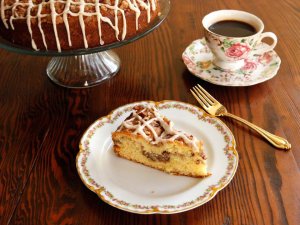 Reflecting the linguistic and gastronomic changes afoot in America in those days had been Aunt Babette’s Cook Book by Bertha Kramer (Cincinnati, 1889), mcdougal from a German-Jewish history. Into the general “Cake” part, Kramer offered a recipe for “English Coffeecake, ” entailing a coffee-flavored butter cake leavened with soft drink. Also, there was an independent section entitled “Coffeecakes, ” encompassing selection of German yeast-raised kuchen and pastries liked with coffee. Pointedly, the meals within the “Cake” area had been leavened with chemical substances, while the cooked products in her “Coffeecakes” area had been raised with fungus. Kramer known these fungus desserts (topped with sliced almonds, cinnamon, and sugar) as “Kaffee Kuchen” and three other individuals as “Coffeecake.” Hood’s Practical Cook’s Book by C.I. Hood & Co. (Lowell, MA, 1897), a sarsaparilla and medication producer, included “German Coffeecakes, ” composed of a sweet fungus breads pressed out and sprinkled with sliced almonds, cinnamon, and sugar, and noting: “The higher an element of the sweetness should always be on top.”
Reflecting the linguistic and gastronomic changes afoot in America in those days had been Aunt Babette’s Cook Book by Bertha Kramer (Cincinnati, 1889), mcdougal from a German-Jewish history. Into the general “Cake” part, Kramer offered a recipe for “English Coffeecake, ” entailing a coffee-flavored butter cake leavened with soft drink. Also, there was an independent section entitled “Coffeecakes, ” encompassing selection of German yeast-raised kuchen and pastries liked with coffee. Pointedly, the meals within the “Cake” area had been leavened with chemical substances, while the cooked products in her “Coffeecakes” area had been raised with fungus. Kramer known these fungus desserts (topped with sliced almonds, cinnamon, and sugar) as “Kaffee Kuchen” and three other individuals as “Coffeecake.” Hood’s Practical Cook’s Book by C.I. Hood & Co. (Lowell, MA, 1897), a sarsaparilla and medication producer, included “German Coffeecakes, ” composed of a sweet fungus breads pressed out and sprinkled with sliced almonds, cinnamon, and sugar, and noting: “The higher an element of the sweetness should always be on top.”
An alternate Teutonic topping proved even more well-known – streusel – an easy pastry of flour, sugar, butter, and quite often spice. Because it does not have any fluid, streusel can consist of a higher number of sugar and butter than other pastries, which makes it tender and sweet. The more expensive the proportion of flour, the crumblier the texture, while a higher proportion of sugar results in crisper and more granular chunks. Streuselkuchen began showing up in Pennsylvanian manuscripts in the 1860s and very quickly in small German bakeries into the Northeast and Midwest. The “Streusel Coffee Cake” in A Book of Cooking and Pastry by C.F. Pfau (Quincy, IL, 1887), the very first record of word streusel in an American cookbook, had been a conventional yeast-raised treat rolled away and topped with streusel.

